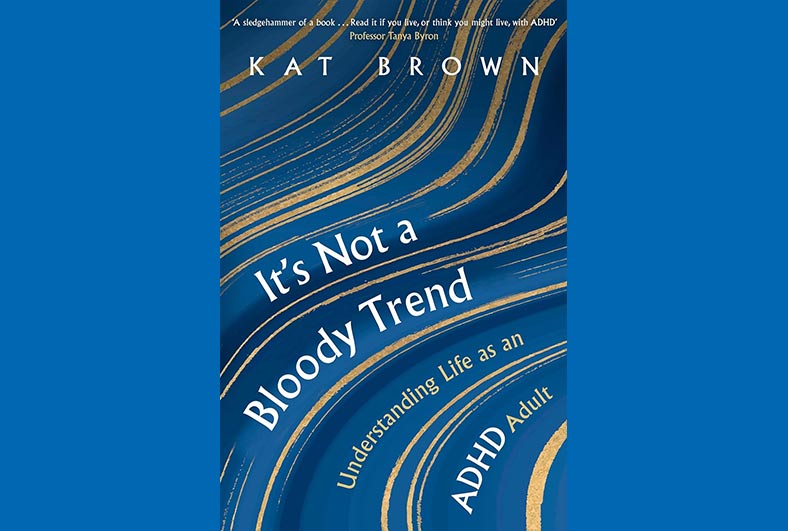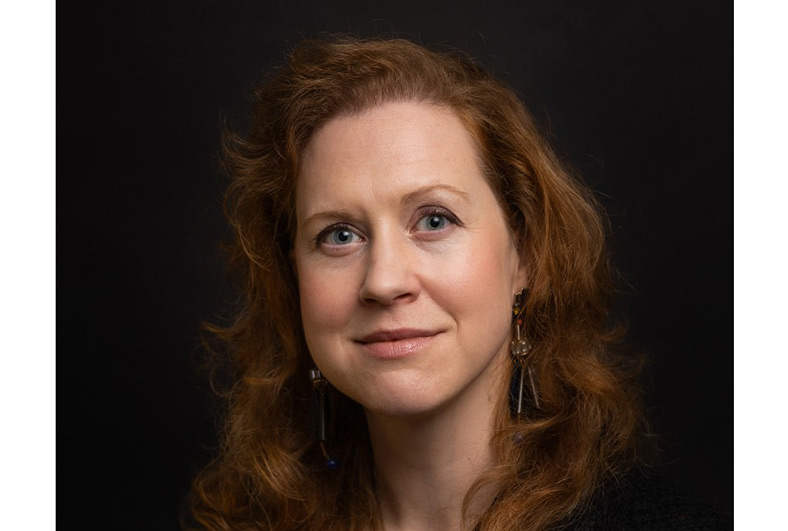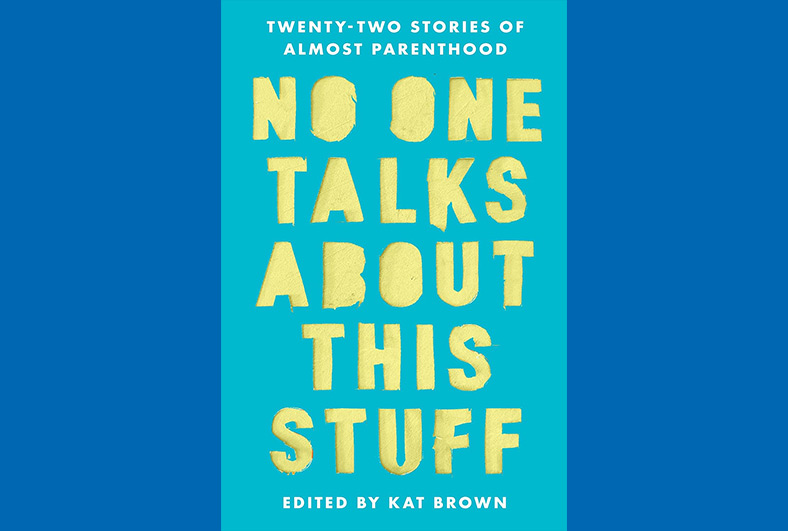Navigating Journalism with ADHD: Insights from Freelance Journalist Kat Brown

For some journalists, the height of the pandemic was the busiest time of their careers, and for others, a chance to explore new opportunities. For freelance journalist Kat Brown, it led her to a new discovery about herself:
‘Four years ago I was diagnosed with ADHD,’ says Kat. ‘Since then I have read, listened and watched everything I can find about ADHD and I’m still finding new things all the time’.

Kat shares her findings in her upcoming book, ‘It’s Not A Bloody Trend: Understanding Life as an ADHD Adult’. We caught up with her to discuss working as a journalist with ADHD and her career so far, writing for outlets including The i paper, The Telegraph, Empire, and Grazia.
How can the industry/commissioning editors better support journalists with ADHD and do you have any tips for others in the journalism industry with ADHD for getting the work done?
Journalism has been supporting a lot of people with ADHD or other neurological conditions for centuries, because every day is different. There’s constant change, constant novelty and new people. Even now with things like Chartbeat and the monitoring of numbers and stats, that is a dopamine hit in itself. I was working on the digital arts desk at the Telegraph a few years ago, and seeing a story that you’d written zooming to the top of the charts was just the best feeling in the world.
In terms of more practically supporting people, that’s really down to HR in every company and I think most of the big ones are becoming more understanding. They will at least be aware of things like noise cancelling headphones being useful. Particularly if you’ve got an article to write or you’ve got some deep work to do, without constant distraction. But then I think that mythical ADHD hyperfocus always comes in extremely useful, particularly for anybody with deadlines.
I also think having a quiet room or somewhere that you can go and just lie down on the floor in the dark for ten minutes to gather your energy is useful. Perhaps not on a day when it’s all systems go, but if things flag for whatever reason, then that can be a time when all of that adrenaline, cortisol and excitement catches up with you and just disappears from your body. A properly sanctioned room is therefore important.
You’ve worked for a number of big news organisations as a social media editor, in an increasingly digital world, how important is social media for outlets and what should they be doing to get the most from it?
I think that’s a question that pretty much every social media company has largely answered through action. Over the last ten years, social media has arguably been crucial, not just for driving views, but it’s evolved so much that each platform is almost a publisher in itself. Therefore, for journalism, you need to package that story for a particular platform. I think we’re seeing some people do that absolutely brilliantly, and some reporters independently, but it’s a big investment.
One of the most interesting outlets combining social media and their own output is Black Ballad, which is a membership community for black women. I highly recommend becoming a member and reading and finding more fantastic writers among their staff. They’ve always had very good ways of bringing in not just new content streams but, showing off their stories on social media and finding new audiences there. It’s something that we’re quite used to American teams doing, like the Atlantic, Vulture, and The Cut.
After nearly two decades in the media industry, what would you say are some of your highlights from your career so far?
There have been career highlights in terms of the odd award or scholarship, which has been absolutely amazing. However, the real highlights for me have been writing about the things that I loved deeply growing up. When I was at The Telegraph, I was lucky enough to review Terry Pratchett’s last novel, The Shepherd’s Crown. That indirectly led me to hosting an event about Terry Pratchett at the British Library and at Waterstones with his family. I’ve been able to do lots of work about Jilly Cooper who was another author that I grew up with. Plus, The Telegraph once sent me to a conference all about the Archers, which was utterly ridiculous, completely charming, and a total dream.
It’s whenever I get to write about something that I grew up with thinking, ‘Oh, this is a silly hobby, and it’s not serious’. Nobody’s going to want me to go to Copenhagen to talk to somebody about computer games, or women in gaming as it turned out to be for Glamour. Every time I do get to write about these silly things that I thought weren’t proper, because they weren’t in the newspapers at the time, I think ‘How times have changed, isn’t that nice?’
Can you introduce your books ‘It’s Not A Bloody Trend: Understand Life as an ADHD Adult’ and ‘No One Talks About This Stuff’ in a couple of sentences?

Basically, they’re support groups for people that don’t have anybody to talk about this stuff with and hopefully to help them feel less isolated. Plus, give them lots of resources where you can go and find more information and other people going through the same thing.
Could you tell us about how you came to write them?
The No One Talks About This Stuff anthology came about because I wanted to find a book that collected people’s experiences of all kinds of loss around being or not being a parent. In my experience, when I was looking in the bookshops, it just didn’t really exist. If it did, it would be a memoir by some, usually white, often blonde or famous woman who would invariably end up with a child at the end.
I wanted to bring together not just my story, but loads of different stories from other people, trying to get as broad a variety of voices and experiences as possible. Whether you’re talking about mental health or physical health, there are all kinds of intersections that play into that.
For It’s Not a Bloody Trend, the original motivation was that I was diagnosed with ADHD during lockdown. I looked through a thread on Twitter and basically saw the last 35 years plus of my life. Eating disorders, insomnia, depression, anxiety, epilepsy, even financial difficulties and issues around addiction. It explained what the hell had been going on with me.
I’d gone freelance the previous summer and had about six months of great freelance work and then the pandemic hit and I had nothing. I did the vaccine trial at my local hospital to give me something to do and was looking into ADHD. I used my tax savings to put towards a private diagnosis and it was just the most incredible explanation. I assumed that having that explanation would be like a big red velvet curtain coming down at the end of the play. However, nothing had really changed because I hadn’t learned how to live with ADHD. I’d only learned how to live with undiagnosed ADHD.
The book is, as all nonfiction writers say, the one they wish had been there for them. It goes through everything from realisation, to specifically how to get a diagnosis, to the history around ADHD and what it is. It also covers acceptance, dealing with work, dealing with finances and dealing with fallout from relationships and family and everything. The book is partly my story to anchor it and partly lots of interviews with people who’ve been diagnosed with ADHD, mostly as adults. There are also experts with decades of experience in the fields of ADHD and other psychiatric conditions.
Are you working on another book, or do you have other projects under way?
Non-fiction is not an area of writing that you go into expecting massive success and money or that sort of thing. My hope for these books is that they reach the people who really need to read them.
The next book I would like to read is one on stigma. I dug in a little bit while writing this book, but I want to explore the idea around stigma more, because I think that’s what screws us all up really, as humans. I think some kind of rationally led scientific explanation of it, to demystify it and remove some of the terror that we can all feel, whether as children, teens, or sometimes still into adulthood. That’s something that I’d like to read. If nobody writes that, I might have a go at that too.
You’ve recently launched a podcast with Helen O’Hara called Pop Culture: The Soft Drinks Podcast, tell us a bit about how that came about and what the podcast will cover?
I’m an absolutely avid podcast listener and when I stopped drinking alcohol a few years ago, podcasts and Instagram were the first places that I went. Helen and I met when we were both working on Empire in 2005. We’re both pop culture journalists and we came up with this idea to explore the landscape of soft drinks, with a weekly podcast every Monday.
We come at it from different angles because she’s teetotal. She’s never drunk alcohol and never had any interest in it, and I’m sober. Therefore our palates are different and what we like about soft drinks is different, but it’s also just a rapidly growing and evolving industry.
We want to highlight all of the different options out there. I think that’s one of the biggest joys of what we get to do as journalists. It’s like being a bird and flying over the world and then being able to go back and report to everybody else. You just get to find out so much and explore the world in that way, and for curious people, there’s absolutely nothing better.
The journalism industry has always been difficult to get into and with smaller editorial teams at many publications, what can aspiring journalists do to stand out from the crowd?
Social media for individual journalists is vital. Not just because it’s a way of finding stories, but you are able to future proof yourself in an industry that is constantly evolving. Social media changes and develops the skill set that you need as a journalist. You need to consider how you present stories and information and also how your readers are going to share and engage with it.
We’re already seeing writers and content creators coming up in their own right, independent of their outlets. And I think social media is a great way to show who you are and what you stand for as a journalist.
You can pick up a copy of It’s Not A Bloody Trend by clicking here, and No One Talks About This Stuff here. If you want to get in contact with Kat, then you can do so via her website.